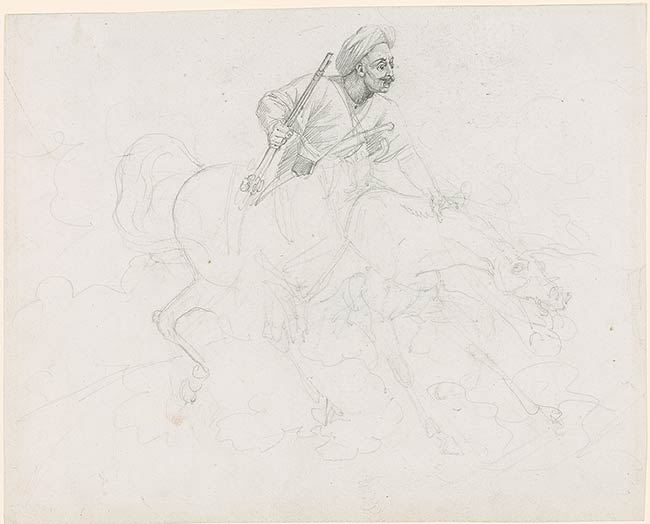

Vernet produced numerous scenes of Egyptian warriors on horseback, many of which were reproduced by other artists in engravings and lithographs to meet the demand in France for images of North African subjects. Vernet's representations gave visual form to the ongoing military conflicts between French forces in Egypt and the local fighters, including Egyptian forces and the Turkish Mamluk warriors who fought alongside them.
This mounted Egyptian warrior grimaces in surprise and fear as he grabs his panicked horse's mane with one hand and seizes his musket with the other. He also wears a dagger across his chest and a sword on his hip. These accouterments suggest he might be a Bashi-Bazouk, a mercenary fighter for the Ottoman empire who was unpaid but rewarded in plunder, or a member of the Turkish Mamluk forces in Egypt.
In this sheet, Vernet comes close to his father's spirit, Carle Vernet (1758-1836), who produced a series of mounted Mamluk warriors starting in the 1820s. Carle's drawings and related lithographs depicted the costumed soldier on horseback, raising a scythe or rifle in the heat of battle. Horace's rider is more expressive, his horse more substantial than Carle's refined equine forms. The subject of the North African or Ottoman fighter remained in fashion for decades in the work of the Vernet, Carle's pupil Théodore Géricault, and the many artists who specialized in scenes of the region in the second half of the century.
Watermark: Grapes with large hollow stem and knot, centered between chain lines.
Thayer, John M. (John MacLane), 1944-2004, former owner.

